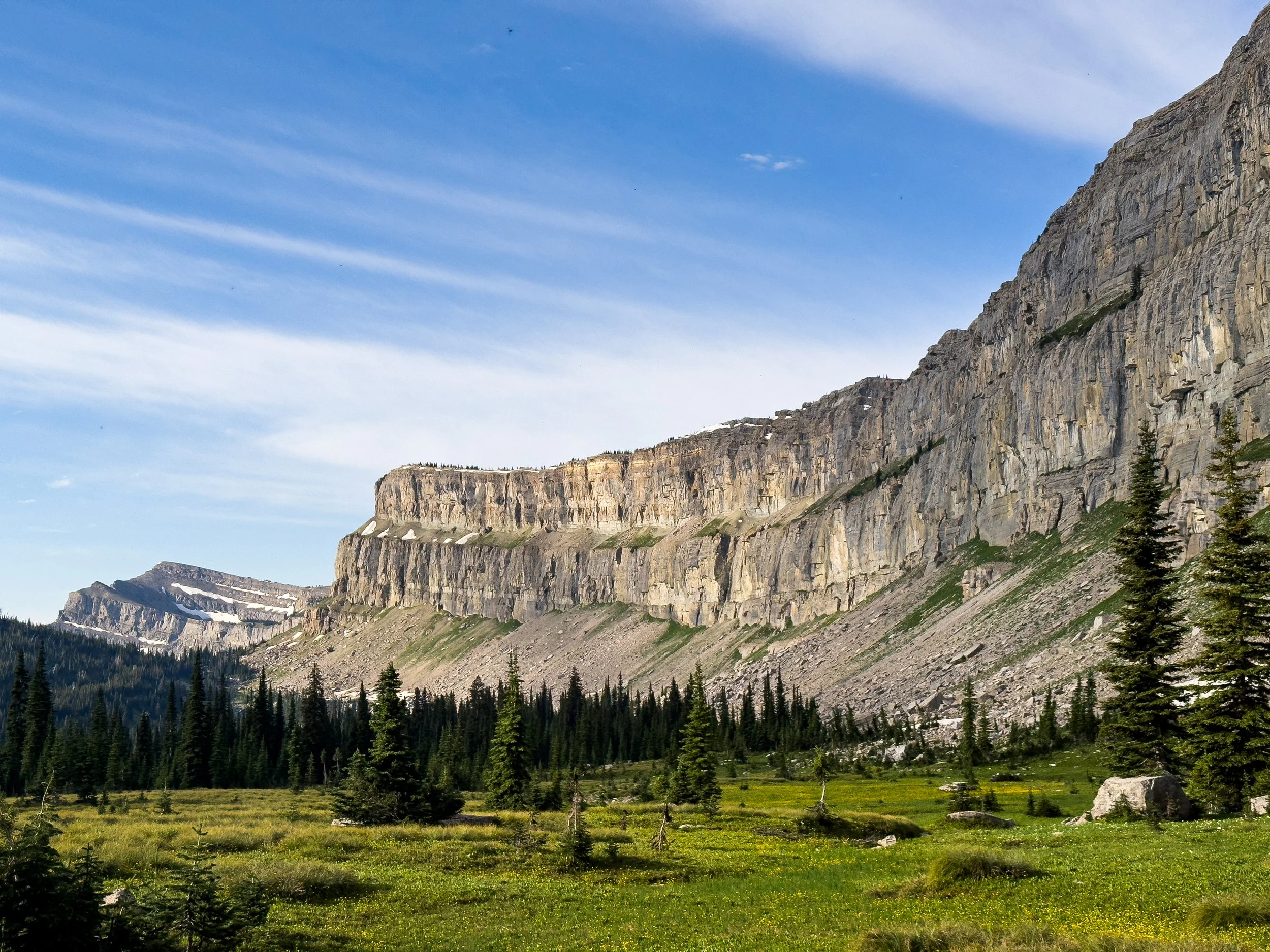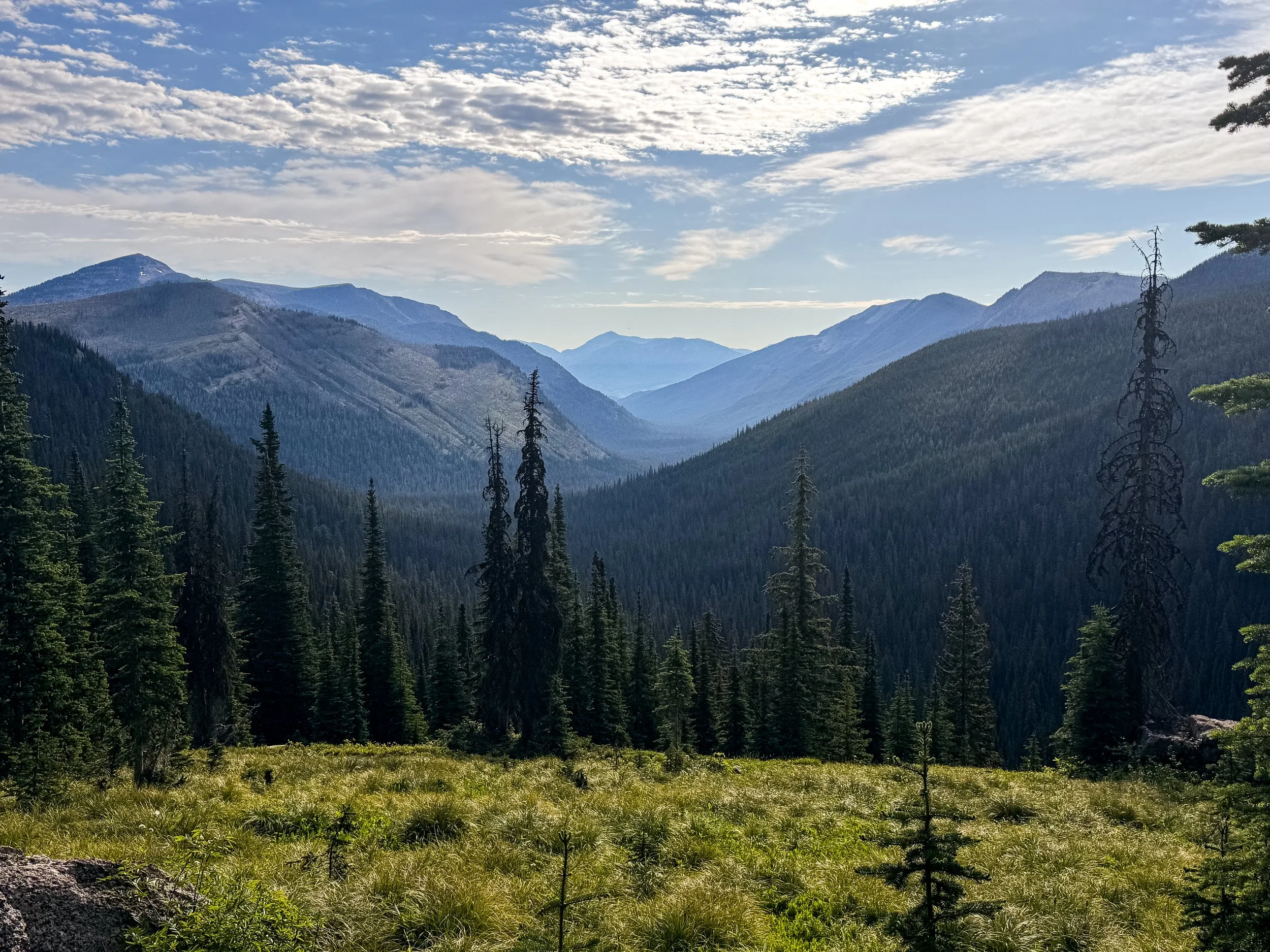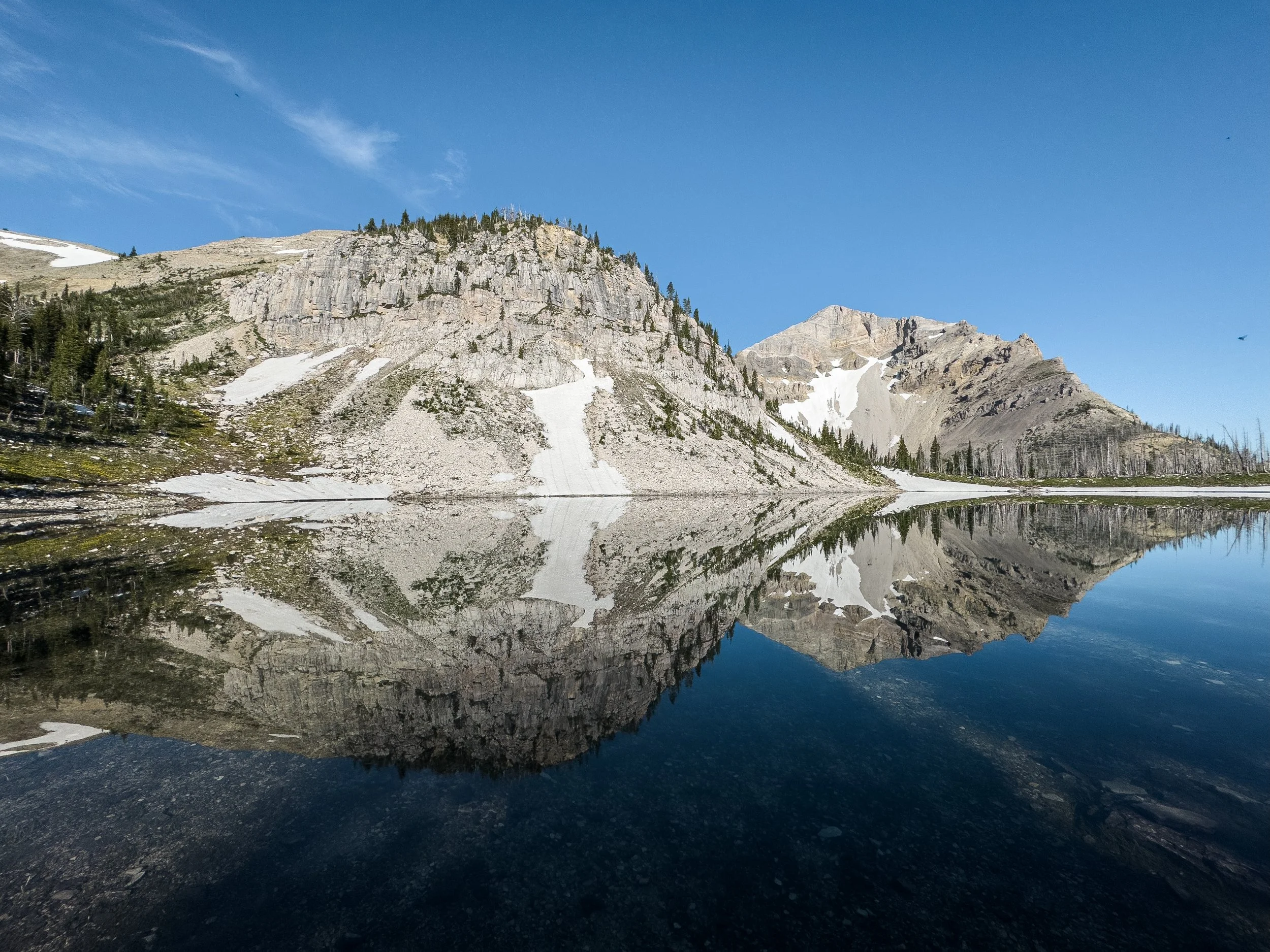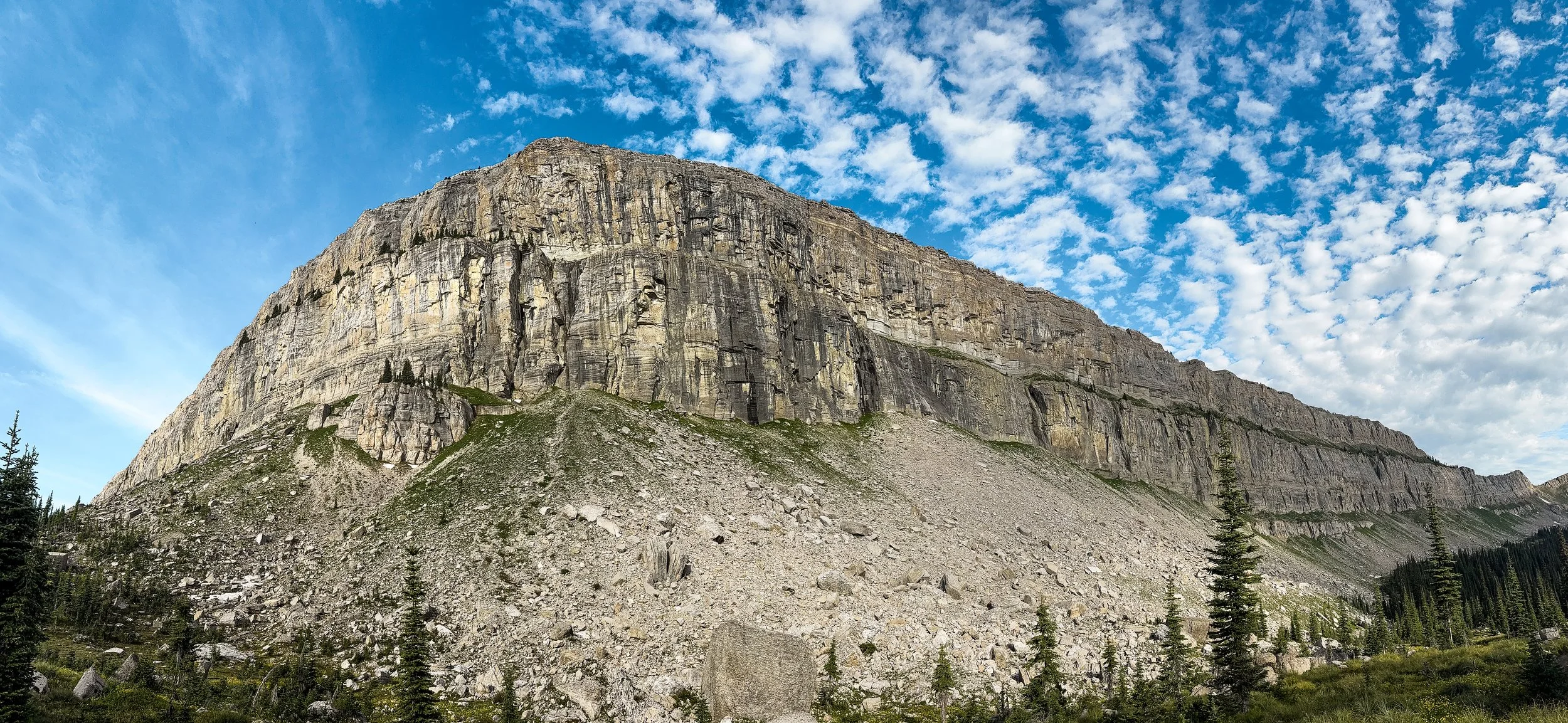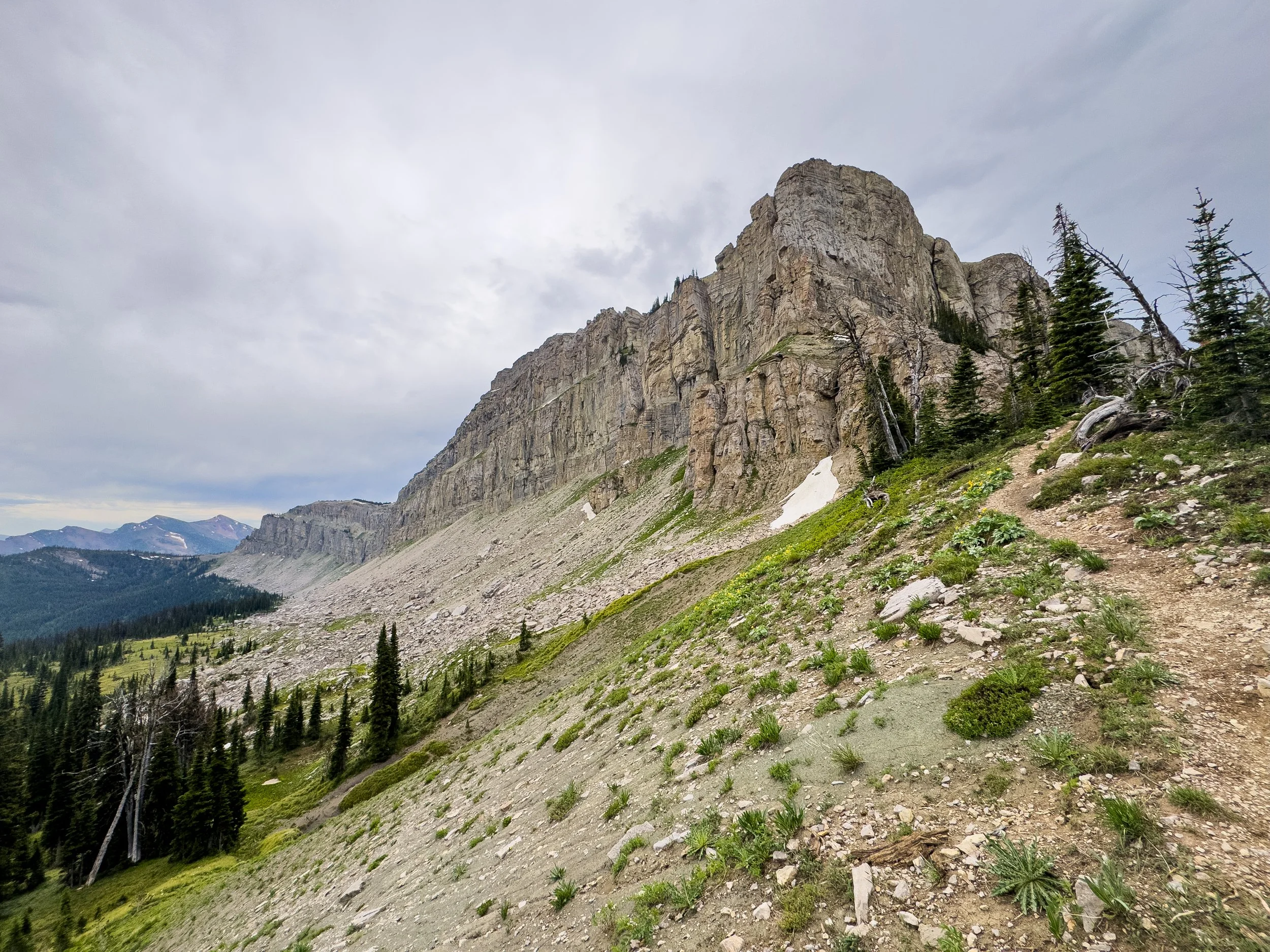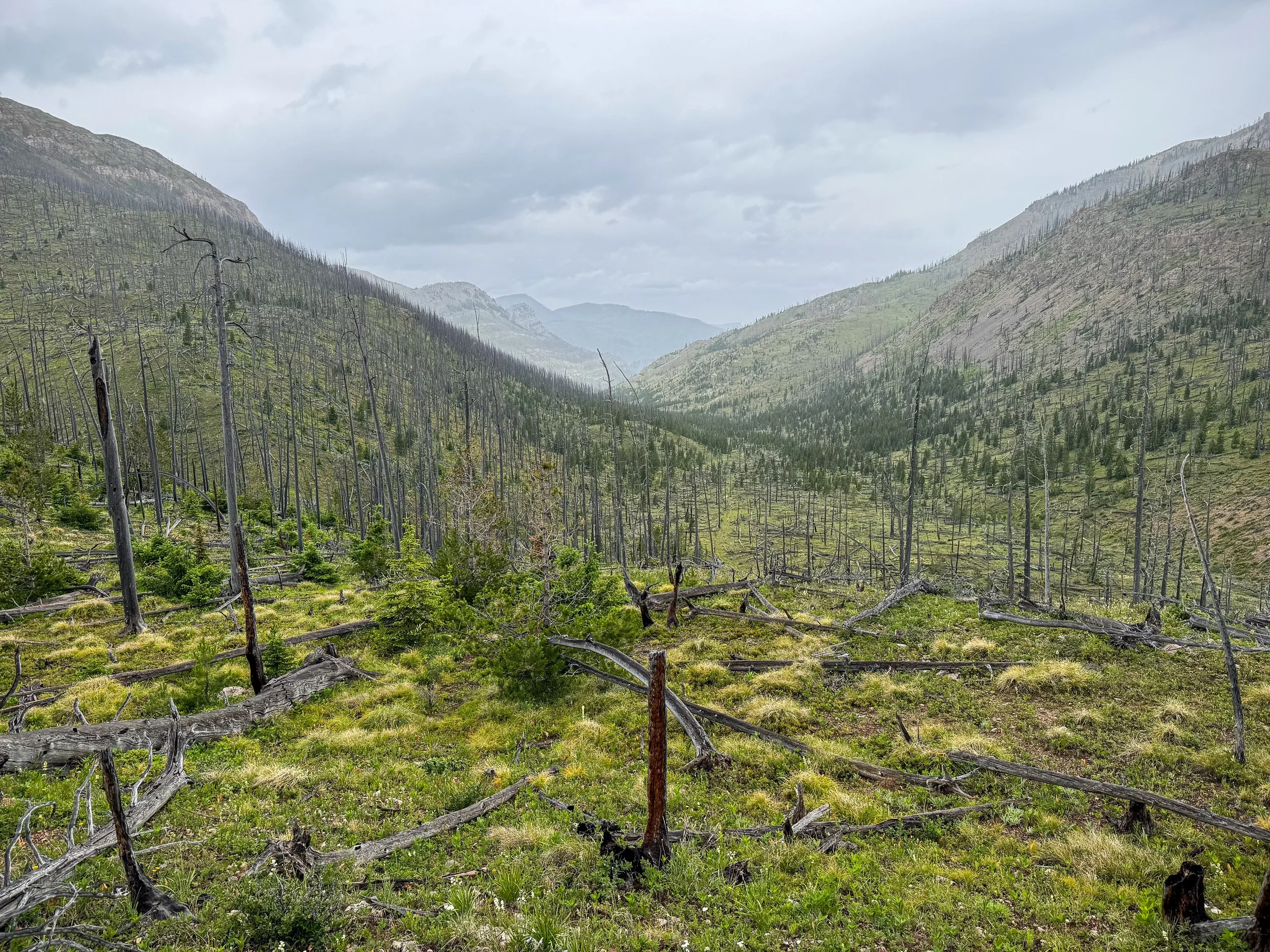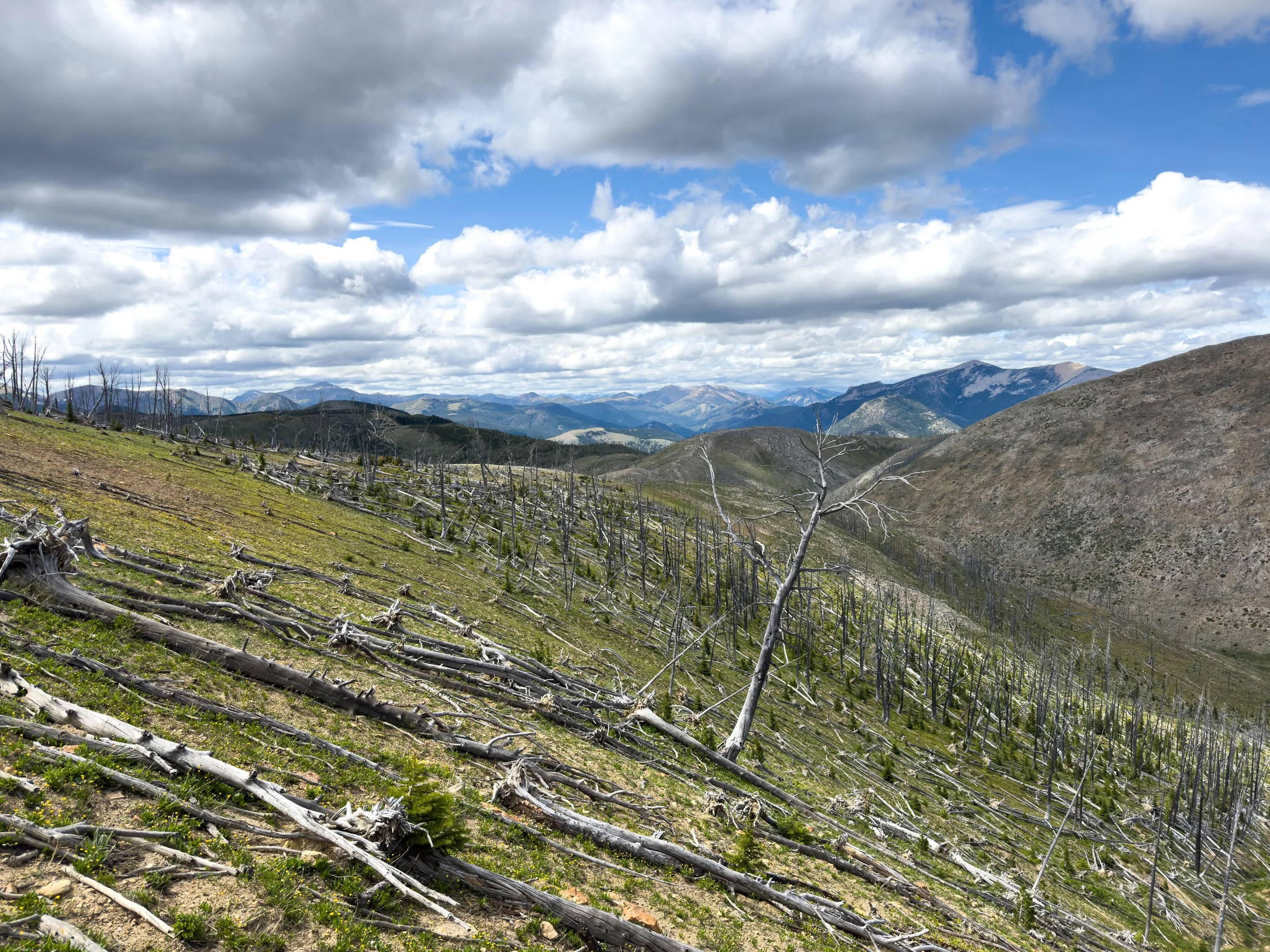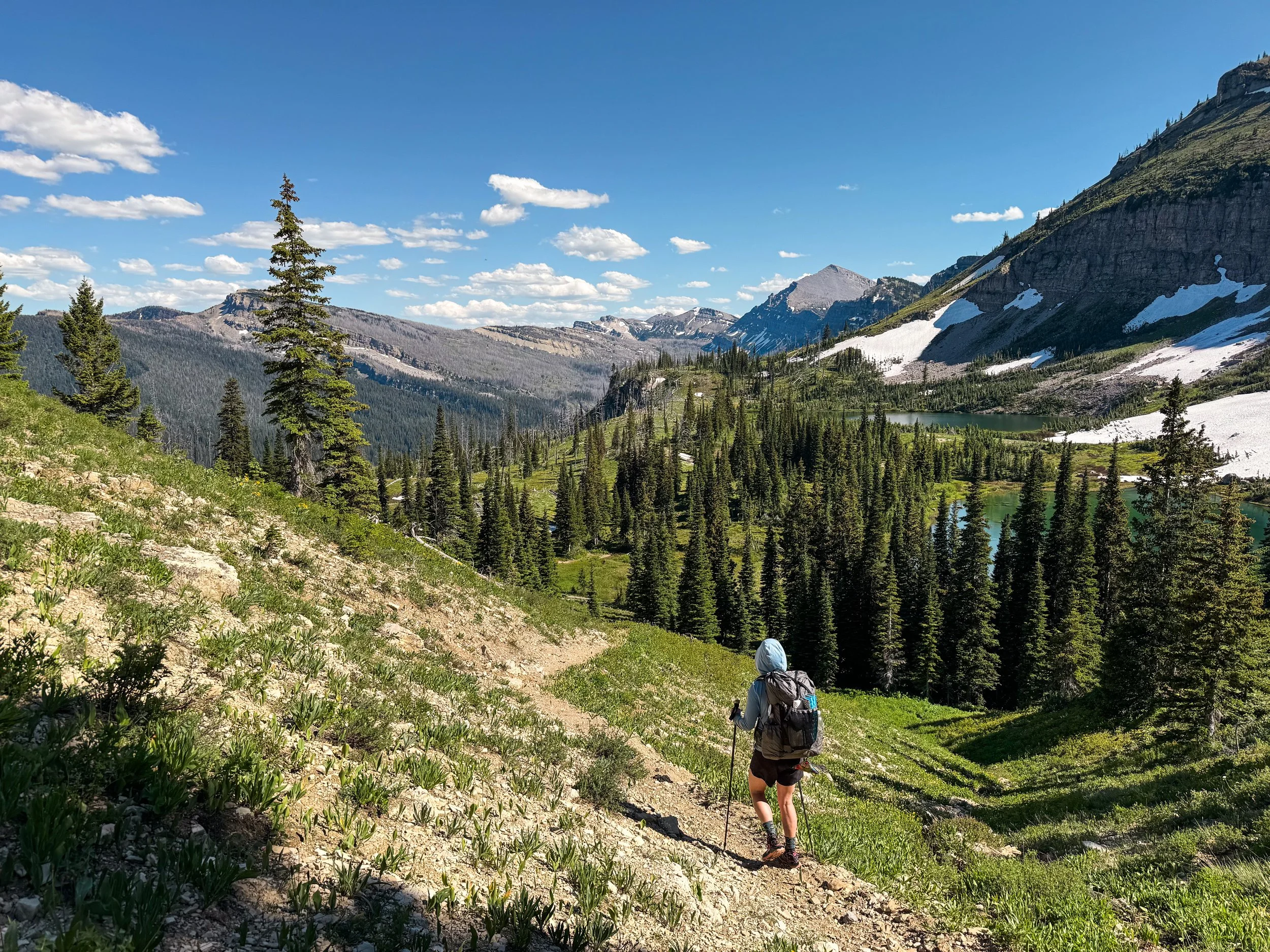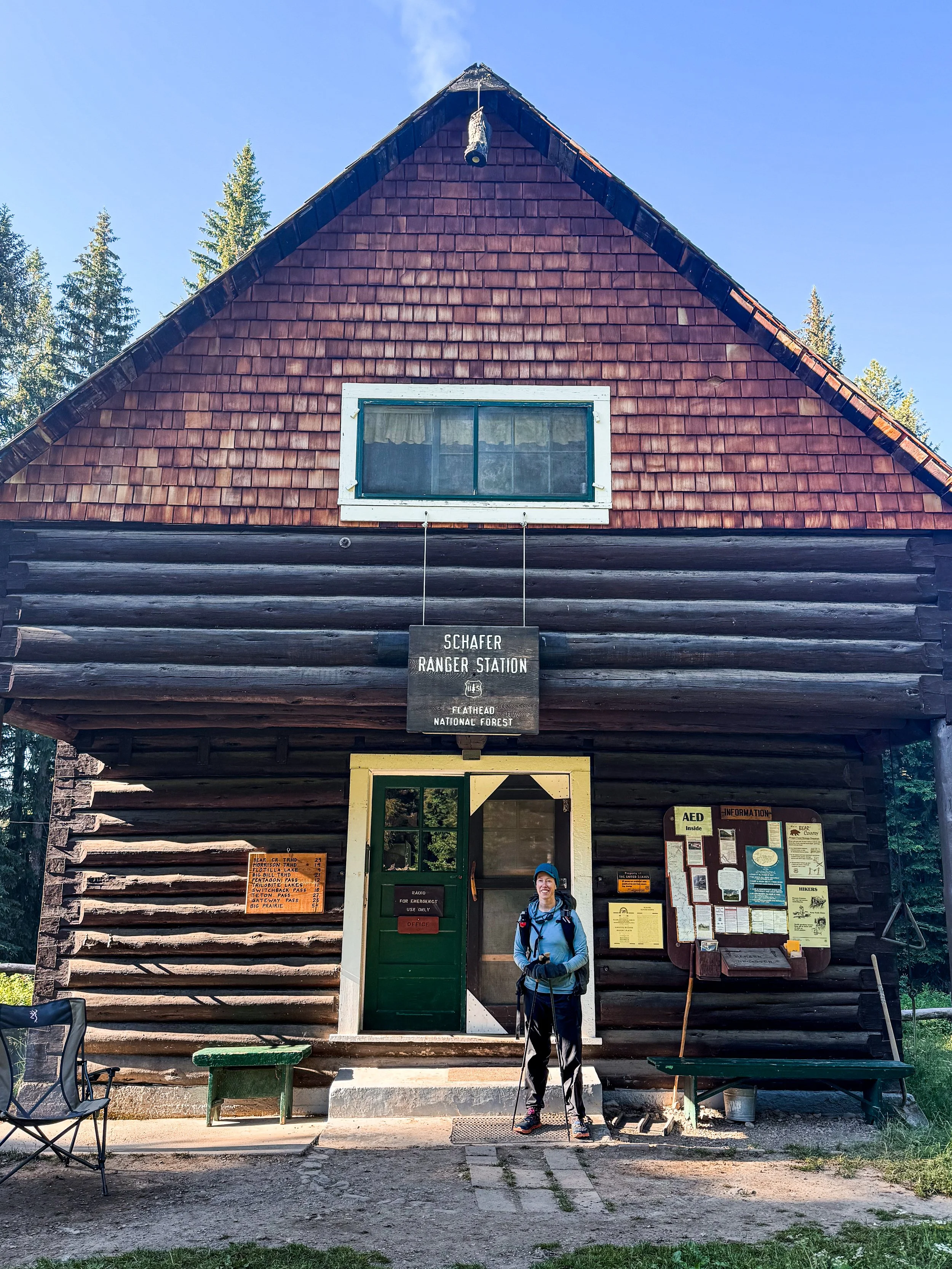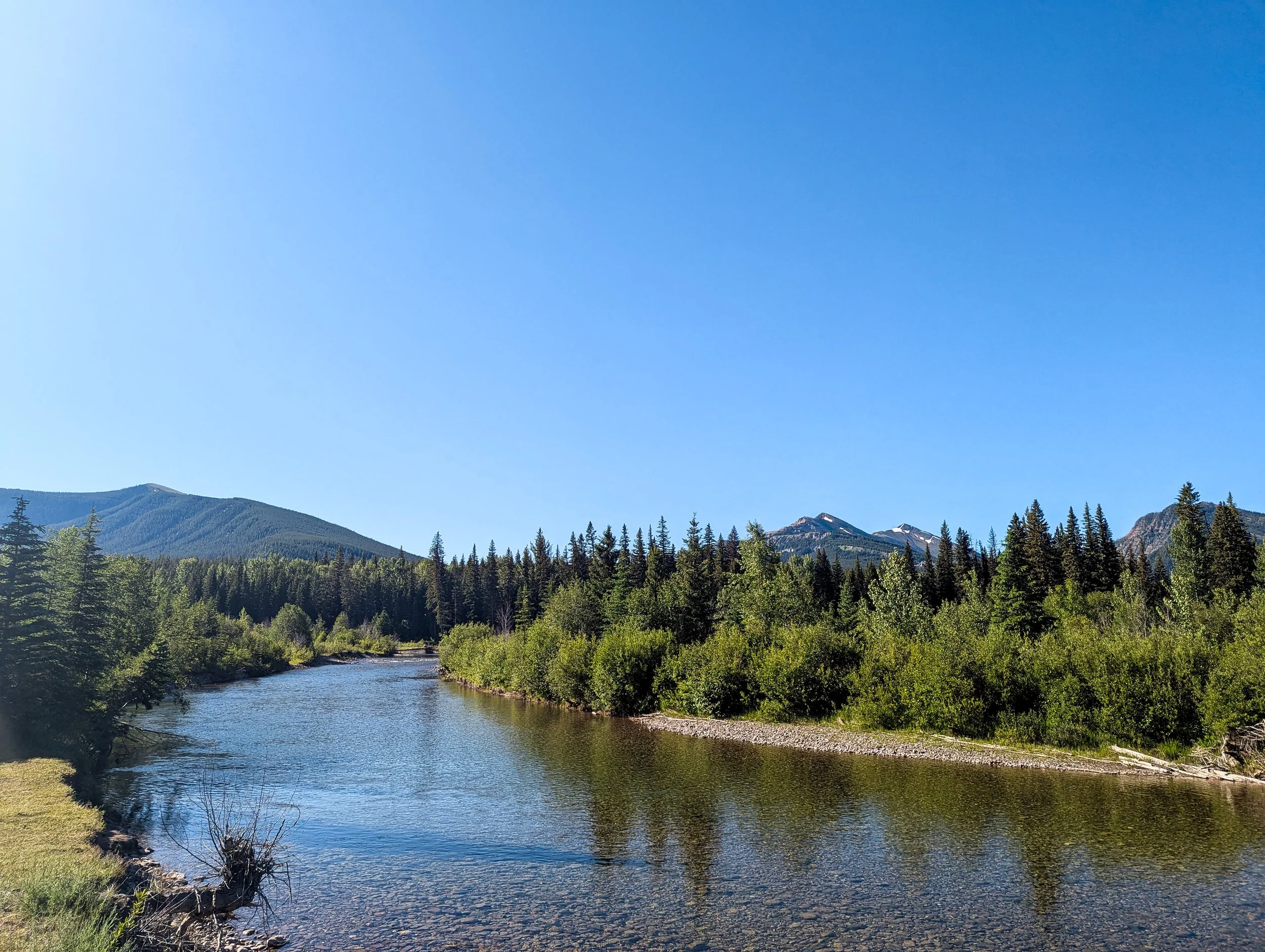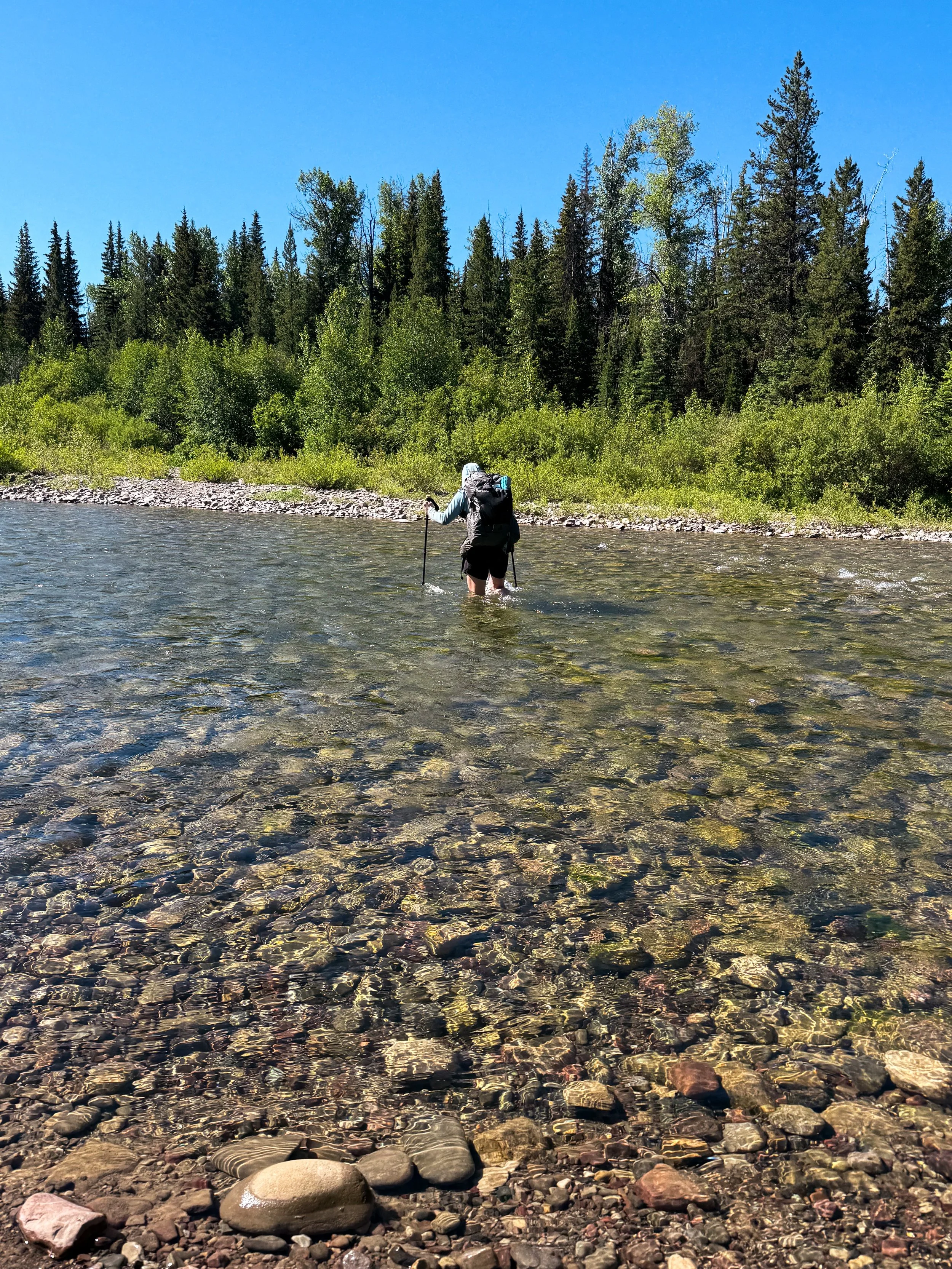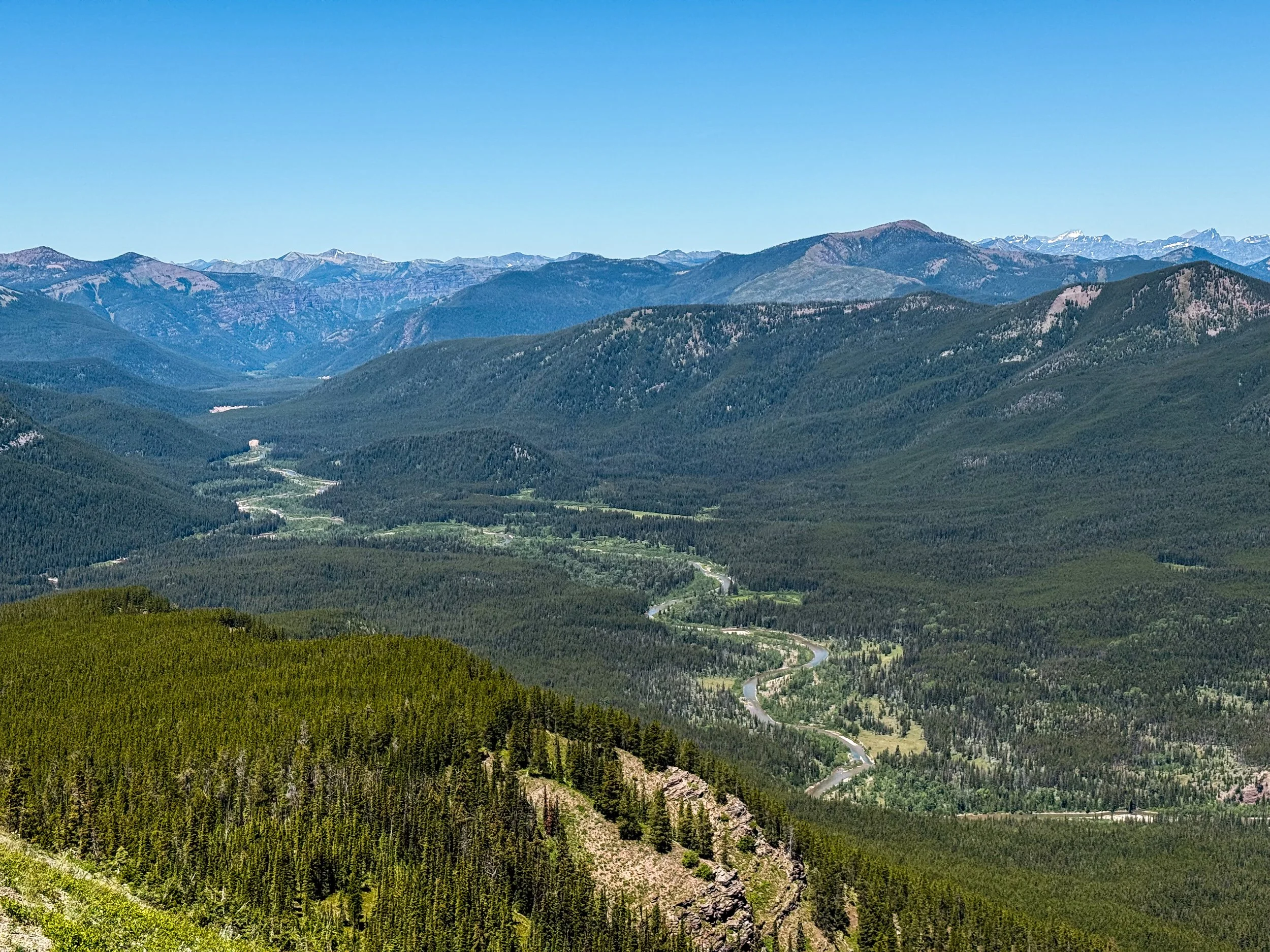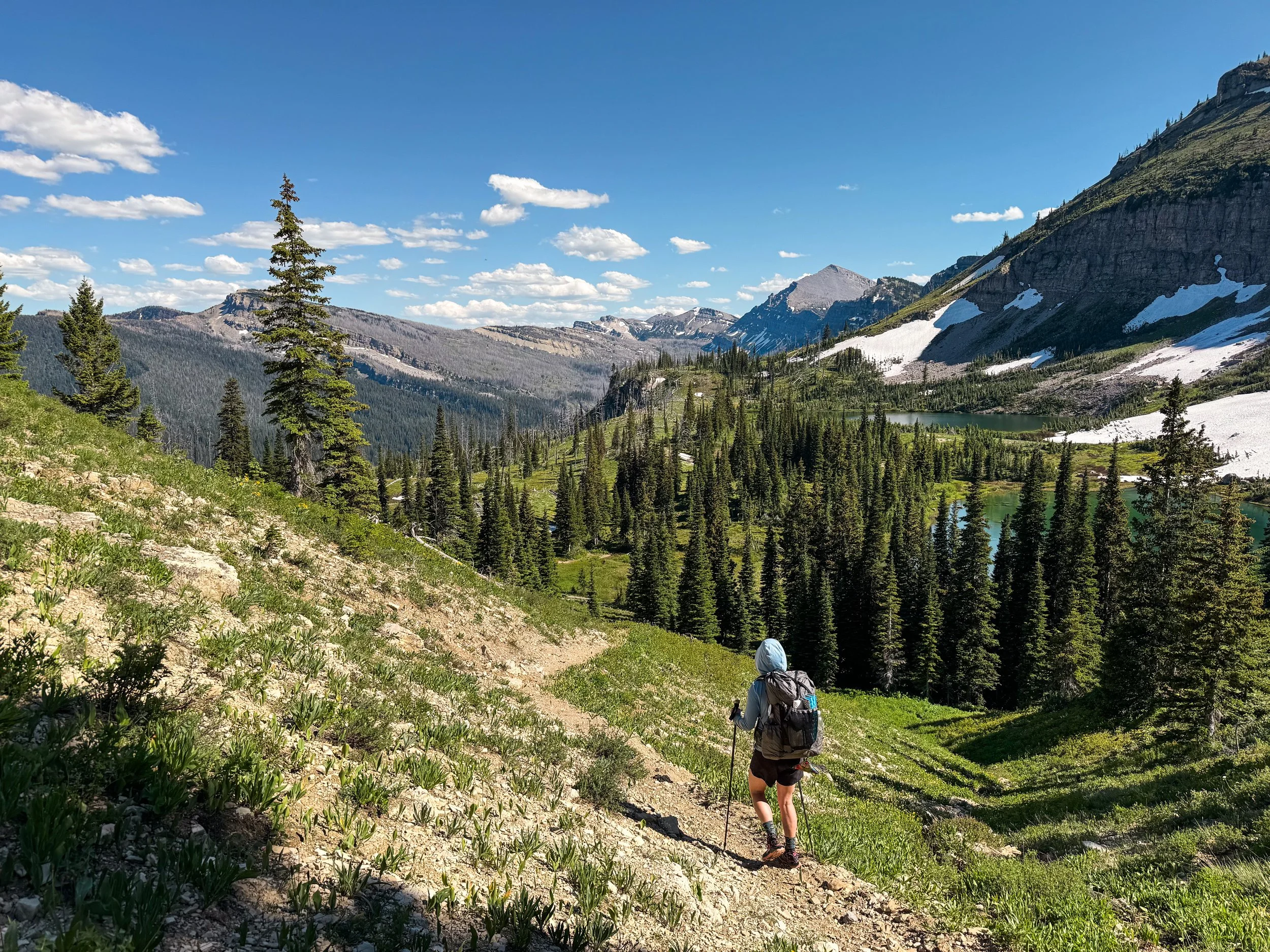Scenes of The Bob
At just over 1 million acres, the Bob Marshall Wilderness is one of the largest wilderness areas in the continental US. Not only is “The Bob” huge and remote, it’s also surrounded by even more Wilderness. This includes the Scapegoat Wilderness and the Great Bear Wilderness. Together, this grouping of public lands, known as the Bob Marshall Wilderness Complex, spans over 1.5 million acres. It’s massive! It is managed by 5 separate Forest Service ranger districts across the Lolo, Helena-Lewis and Clark, and Flathead National Forests.
As a reminder, Wilderness areas are the most protected of all the kinds of public lands in the United States. This is where you go if you really like to experience the mountains in way that is fairly untouched by humans. You can’t have motorized equipment or even wheels in the wilderness. (Unless, of course, if you have an exception for a small grass airstrip, a special case we touch on briefly in our last post.)
The CDT has a lengthy section through The Bob, running for 177 miles without crossing a road. It took us nine days. That’s a lot of time to go without real town services, with the exception of a single package pickup (full of food!). When you are in The Bob, you are acutely aware of just how far it is to any services at all.
Rather than give you a history lesson or tell you stories about our time in The Bob, I’m just going to show you some cool pictures that show the different sides of this place.
Mountains, as far as the eye can see
Dean Lake with a reflection of Pentagon Peak (right)
Trilobite Peak with the trail visible in the valley below
If there was one special highlight of our time in The Bob, besides Molly’s awesome adventure from the last post, it would be the Chinese Wall, which is a 12-mile-long escarpment. The CDT follows along the base of the Chinese Wall for the majority of its length. We had really hyped this thing up in our minds as we prepared for the trail months ago.
You know when you go to a restaurant that you’ve been stoked about for months and it’s actually not that good? This wasn’t like that. This was awesome. Boy oh boy. It did not disappoint! We hiked along this thing for an entire morning, gawking in amazement at the scale and beauty of this rock feature. I am well aware that what follows is a gratuitous number of photos of the Chinese Wall. I don’t care. I love these photos. I loved walking underneath that rock feature.
Looking south along the Chinese Wall
From a saddle along the Wall
Looking north along nearly the full length of the Chinese Wall
Looking south from the halfway point at a saddle
Once we passed the Chinese wall, we weren’t done with the beauty of the Bob quite yet. Here are a few more photos of The Bob after the Chinese Wall.
Some well manicured trail as we got to the edges of the Bob – you can tell when you’re approaching a trailhead because the quality of trail increases dramatically.
Walking through a forest that burned in recent years – huge swaths of the Bob are affected by fire each year. More to come on this, since it has played a big part in our trip so far. This particular day was rainy and dreary, but not so much so that you couldn’t still get some interesting views.
More burn area with dead trees laid down by extreme winds and mountains extending off into the distance
A classic view of the Bob with the Chinese Wall just visible, far in the distance. This photo is best viewed on the biggest, widest screen you can find.
A Return to Schafer Meadows
A quick note: These CDT posts are usually from both Jonathan and Molly, but this one is a little different since it's about a place that's special to Molly, in particular. She'll tell it from her perspective for this one.
Molly in the northern part of the Bob Marshall Wilderness
Fourteen years ago, in 2011, I worked for a summer with a Forest Service trail crew in the Bob Marshall Wilderness. I was flown in to a remote backcountry ranger station with a quarter-mile grass airstrip and spent the summer hauling rocks, building bridges, and wielding a six-foot-long crosscut saw. By September, I'd hiked over 600 miles.
I learned a lot that summer, the summer before I hiked the Appalachian Trail. I had some experience backpacking and working on trails, but this was a whole other level. It was physically brutal. And it was also a pretty lonely time for me. When I wasn't working, I spent hours in the shade along the Middle Fork of the Flathead River, looking up at the delicate green Aspen leaves and reading every book I could find in the ranger cabins.
Over the years, Jonathan and I have talked so much about Montana and about this remote place that shaped my imagination of wilderness. When we started planning for the CDT, we found it on our maps and started scheming about whether we could get there. The Schafer Ranger Station is not on the official CDT, but Jonathan searched through maps and map layers to find trails to connect us there and back. He found a potential route and created a GPX file for us to upload into CalTopo (one of our mapping apps). We weren't certain the trails were still there at all.
When we arrived at the junction to the first of these mystery trails, there was only a faint path that petered out in a meadow 20 feet off of the CDT. We tromped through a couple more meadows seeking out faint use trails and discovered an overgrown, but clear path leading out the far end. With a deep breath and some crossed fingers, we ducked under the first brush and into the tunnel.
For several hours, we followed the same trail, sometimes clear and open, sometimes fully hidden in the thick undergrowth. Once in a while we saw old shoe prints, but we could tell that the trail was still in regular use by deer and elk. We climbed up a ridge in meadows filled with wildflowers and eventually reached an open burn area where the fire had completely destroyed the trail. We did our best to track it, but ended up bushwhacking down a steep field of thimbleberry bushes and deadfall, trying not to break our ankles. There was a massive sigh of relief when we found our little path again at the end, following a creek down toward the valley where we'd rejoin a major trail again (we hoped, anyway).
After 17 miles or so, we came through a bright green meadow and found we'd reached the junction to a major thoroughfare. Rejoice! We celebrated with a picnic dinner in the meadow, then hiked a few more easy miles to camp.
The next day, we woke up early and strolled the four miles to Schafer Meadows, arriving at the far end of the wilderness airstrip. A tiny plane landed just as we arrived, then another. They were ferrying rafters to the Middle Fork to start a float trip. We stayed to watch for a bit. The airstrip was built before this land was designated as a Wilderness and so has been preserved and its maintenance grandfathered into the management of this area.
A plane landing on the Schafer airstrip, with the one that just landed parked in the foreground
I saw the whole place again through my 21 year old eyes, jumping off that plane full of anticipation and blown away by the mountainscapes around me. I walked over to the station and peeked in the front door. A Montana Conservation Corps trail crew leader came out to chat. She let me come inside the station and even go upstairs to the little room above the kitchen where I lived that summer. It all looked just the same. Even smelled the same.
A portrait of Molly, arriving at Schafer Station
Molly posing in front of the Ranger Station where she lived and worked in 2011
We walked down to the river. When I got to the waters edge, the view out over the valley was exactly as I remembered. The same snow streaked peaks and bright green aspens glittering in the breeze. I cried with joy to see it again and to share it with Jonathan, who did so much legwork to make sure we made it there. I felt an immense gratitude for him and for how he shows me love in such beautiful, personal ways.
The view from the banks of the Middle Fork behind the Schafer Ranger Station
Molly fords the Middle Fork of the Flathead River, just after leaving Schafer Meadows
Back at the station, we pulled out lunch supplies and our MCC friend, Sarah, brought out a grapefruit and an apple that she'd cut up for us. She stayed to chat for a while and even offered to take our trash (a true gesture of friendship for a thruhiker). We learned that there wasn't a Forest Service crew stationed there this year due to the federal budget cuts. She and two other MCC members were doing the work of 6 Forest Service employees – they would cover less than half of the territory normally maintained, which she knew would make it harder next year and beyond. Her warm reception made our visit exceptional, but I was sad to hear that the station wouldn’t have the same life as it had in years past.
Heading back to the CDT, we forded the Middle Fork and walked up the valley from Schafer up to Chair Mountain for one of the most spectacular views out there (though you do have to work for it). You can see the Schafer Meadows airstrip far below and then just mountains all around, as far as the eye can see in every direction. It's so remote that it's hard to imagine the developed world existing beyond the horizon. Like maybe the mountains just extend on and on forever. We followed the ridge up and over to Trilobite Mountain then back down to meet the CDT.
Schafer Meadows and the Middle Fork as seen from Chair Mountain
Jonathan in a field of wildflowers below Trilobite Peak
Molly heading back toward the CDT near Trilobite Lakes
Glacier NP
Back in March, when we were still just dreaming about the CDT, we signed up for a lottery to win a spot in line for permits to camp in Glacier National Park. There are a lot of rules around backcountry permits in Glacier. You can't book sites more than 16 miles apart, you must pick them up in person the day of or day before, and if you don't win the lottery, you have to show up and just pray that the ranger can patch together an itinerary for you.
We won the lottery! We got a great time slot on the very first day bookings opened and mostly managed to get the itinerary we’d hoped for (they go fast!). We booked permits for four people (the maximum allowed), because we’d heard other folks sometimes get stuck without.
Thru-hiking is an exercise in flexibility. You make a plan. You change the plan. You make a new plan. You scrap that plan too. Then you basically just wing it and hope it all works out. And most of time, it does. You'll often hear hikers say, “The trail provides.” But I think it really means the community provides. We put in love and care to the hiking community and we get love and care out too. These first few days have reminded both of us how much we love this community.
When we arrived in Kalispell we were greeted by old friends (including a hiker Molly met on the AT) who gave us a cozy room in their hotel, made us dinner, and dropped us at the train station once we'd all caught up and swapped tales from our travels. (If you're ever planning a trip out here, go stay at Switchback Suites!! Joe and Katie are just the best).
Old friends getting to hang out in new places
We took the train over to East Glacier and arrived at Luna's (AKA Looking Glass Basecamp). Luna's is a hostel. For $20, CDT hikers get a place to sleep, a shower, town clothes (for doing laundry), a kitchen to cook in, a place to charge electronics, and an incredible resource to the whole trail community. Luna herself is a gem of a human. She's brash, disarmingly kind, and uproariously funny. She regaled us with tales of bear spray gone wrong, including cautioning us in all seriousness not to jump in a creek if we get sprayed in the face. “It washes down,” she said with raised eyebrows, “And it hurts worse in the bits than in the eyes.”
We slackpacked from Luna's two days before our permits began and started meeting all of the other hikers. With permits scarce, hikers were crisscrossing all over the Park, hitching and slackpacking, trying to cobble together a path through Glacier. We felt lucky to have planned ahead and soon found two other hikers who wanted the additional permits we'd purchased back in March. And so with Smokebeard and Shaun, we formed our merry crew for the trek north.
The Glacier crew en route to Two Medicine (from left to right): Jonathan, Molly, Shaun, Smokebeard
Looking out across Glacier National Park with Two Medicine Lake in the background
The crew headed out from Two Medicine and immediately climbed up and over Dawson Pass to Pitamakin Pass. The scenery was straight out of a fairytale and the weather was perfect.
Hiking up from Two Medicine toward Dawson Pass
The view from Dawson Pass
Jonathan posing just after Dawson Pass, heading toward Pitamakan Pass
Molly and Shaun crossing a snow field just below Dawson Pass
Molly hiking down toward Seven Winds of the Lake (left) and Pitamakan Lake (right)
As we descended from Pitamakin Pass we encountered about a mile of on-again, off-again snow. Usually, snow is heinous to thru hikers. It can be steep and treacherous. Or if it’s too soft, you might be post-holing up to your thigh. This snow, however, was mostly low angle. It held up to our hiking over it, and it was soft enough to slide across. This meant that we got to sort of cross-country ski/slide on it in our trail runners. As people who love skiing of all kinds, this brought ridiculous amounts of joy. It added an ease and playfulness to our descent that we relished. Between the weather, scenery, camaraderie, and “skiing” this day was one to be savored.
The next day, we climbed over Triple Divide Pass. The neighboring peak is the hydrological apex of North America: it separates watersheds that flow to the Pacific, the Gulf of Mexico, and Hudson Bay. How cool is that?!
Shaun heading up beautifully graded trail to Triple Divide Pass
After Triple Divide, we wandered down a lush valley overflowing with waterfalls.
A waterfall after Triple Divide Pass, unnamed on our map
Midday on the following day, we got some cell service near Saint Mary Lake and received a weather alert that up to 24” of snow were anticipated up in the high country. A winter snowstorm on the summer solstice. And a bit of a hitch in our plans, which would have taken us over another high pass the following day. We decided to head down to Saint Mary's and make a new plan.
St. Mary Falls, Glacier National Park
At Saint Mary's, the rangers went out of their way to help us shift gears. Kristen and Todd made our day by pushing out our permits and helping us find a way to wait out the worst of the weather down low. Federal employees don't exactly have the easiest jobs right now, so we appreciated their efforts and expertise even more than usual.
Once the weather clears, we'll head up toward Piegan Pass and Many Glacier. We can't wait to explore more of this incredible park. Onwards to Canada!
Our CDT 2025 Gear Lists
One of the most common questions we’re asked about thru hiking is what we’re bringing with us. My favorite iteration of this question is, “How many sets of clothing are you bringing?”, because it brings me a tiny bit of joy to watch the wave of emotions that occur as someone realizes that we do not, in fact, bring any spares.
On a thru hike, your gear is your life. For every item in your pack (or on your body), you have to decide the right balance between the item’s weight and its function, durability, and cost. Between the two of us, Jonathan and I have 5 thru hikes under our belts now. We have a LOT of feelings about what we put in our packs.
Scroll down to peruse our gear lists in full – we wrote down every single non-consumable item in our packs (plus a couple of key consumables) as well as the clothing we’ll be wearing during the day. The lists should contain every single item we are responsible for on the trail apart from food, water, and some consumables like sunscreen or ibuprophen.
Overall our gear lists for the CDT look a lot like they did for Te Araroa, but we've each made a couple of tweaks. Both of us switched our hiking shirts to the sun hoodies we practically live in at home, and we both picked up some cheap wind pants (technically, wind resistant dance warm up pants). We opted for 3/4 length base layer pants along with the wind pants to make our cold weather gear a little more modular without adding weight. I also picked up a new pack after struggling a little with my SWD bag, which was just slightly too short in the torso. So far, I'm loving the fit of my new Durston Kakwa pack, but we'll see how it holds up on trail.
One other big change we've made was that Jonathan will carry his own pot this time. We've been together for over ten years now and have gained enough wisdom to know that a little independence is well worth the weight. We don't particularly fight about money or politics, but if you eat more than half my dinner… Let’s just say we have to live together 24 hrs a day out here.
Finally, we made a few updates that are CDT specific. We're carrying head nets for the infamous mosquitos of Montana and Ursacks for the larger predators. Glacier National Park, where we begin the journey also requires we carry 25’+ of cord for hanging all of our smellables. This is grizzly country!
Each and every item on these lists has been discussed, agonized over, debated, and finally made the cut. What's not here is perhaps as important as what is (maybe more so). And with that, here goes nothing! Next time you hear from us, we'll be on trail.
Embrace the Brutality
Molly and Jonathan leave in mid June to embark on the Continental Divide Trail: 3100 miles of rugged, beautiful trail along the spine of the continent.
When you’re 21 and leave college to hike 2200 miles alone, I have it on good authority that your parents might be ✨unamused✨. And when, in your late twenties, you quit your job, sell everything you own, and fly halfway around the world to play in the mud, you’ll get a few raised eyebrows and not-so-subtle suggestions that you’re “ruining your career.” But it says something distinct about the present moment that when Jonathan and I, now in our mid thirties, announced that we were leaving our established careers in a wildly uncertain economy, renting our condo to strangers, and heading to the woods for five months, y’all were 100% on board.
Frizz and Pedi getting back in hiker trash mode
Jonathan and I are beyond excited to assume our trail personas (Frizz and Pedi) and begin our next adventure, with 3000+ miles of wild, rugged, beautiful trail ahead of us this summer. We’ll be flying to Kalispell, MT on June 15th to start our thru-hike of the Continental Divide Trail (CDT). The CDT has been a dream for us since we completed the Pacific Crest Trail (PCT) in 2014. In some ways, I’ve had it splashing around in my brain since 2012 and my first steps on the Appalachian Trail (AT).
There is a very specific appeal to leaving daily life behind right now, though it is a complicated time for us to leave. We have a lot more stuff than we used to, including a home and two cars. We’ve built an amazing community of friends and neighbors in Colorado. And on a larger scale, we’re seeing what you’re seeing: historic levels of economic uncertainty, war, famine, and genocide abroad, a constant barrage of hateful political speech, and a broad devaluing (and defunding) of science and education. It is also a complicated time to travel on public lands: layoffs among federal employees and massively reduced funding will mean Parks are understaffed, trail maintenance will suffer, and it may be harder to get updates on closures, wildfires, and other hazards.
And yet.
Last year was a tough one for us physically. I had hip surgery in May and Jonathan badly broke his ankle in July. The idea of thru-hiking again one day was a powerful force pushing both of us to stay diligent with PT and stay positive during recovery.
Recent news has also made us think twice about how long these trails will be as accessible to us as they are today. How long will Glacier National Park still have glaciers? And for how many years will long stretches of trail remain as protected land? There are constant reminders of this in the news, including a bill passed by Republicans in the House this month that – if it passes the Senate as is – would expand options for mining and drilling for oil and gas on public lands, including in our National Parks. The original version of that bill also proposed selling off huge swaths of public lands and approved building an industrial road through Gates of the Arctic National Preserve in Alaska. It was only through an uprising of public criticism that those measures were struck from the final version.
Prepping a 4-day resupply to send ahead
And so, it is time to go. Taking the first steps on this trail will absolutely be a dream come true. Thru-hiking has changed me – shaped me – in so many ways that it has fundamentally become a part of who I am. And the CDT? Well, it’s the big one. The CDT is not only the longest of the three American long-distance trails, but it’s also by far the most remote and most logistically challenging. I’d tell you more here, but I wrote a whole other page about it so go read that one!
Jonathan and I are ready to find what the CDT has in store and be moved and changed and challenged by all of it. We’d love to have you along for the ride. Subscribe to the blog for email updates when new posts are published or follow us on Instagram (Jonathan or Molly) for more bite-sized updates.

